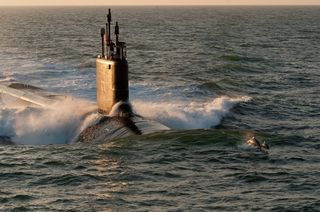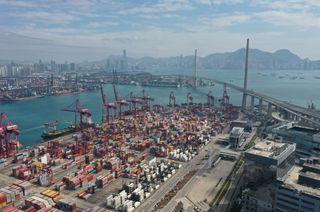The Australian
By Tom Switzer
We all know that in the 21st century the centre of economic and political gravity is shifting to East Asia. How often have we been told we are living in the Asian century?
Yet in both Australia and the US, the political and media elite dedicates precious little time and energy to Asia.
When Lee Kuan Yew died in March, the Australian media (with rare exceptions, such as this newspaper) missed the significance of the story. Indeed, neither ABC television’s 7.30 nor Lateline — the premier news and current affairs programs on our public broadcaster — featured any segments on arguably the most consequential and influential figure of postwar Asia. Nothing.
Nor does the American media fare much better on Asia. During the 2012 presidential foreign policy debate between President Barack Obama and his Republican challenger Mitt Romney, veteran journalist Bob Schieffer did not broach the subject of Asia.
Almost every question relating to America’s role in the world revolved around terrorism and the Middle East.
Bear all this in mind when you consider that the likeliest hot spot for great-power conflict is not the Middle East or the Baltics but the South China Sea, which serves as one of the world’s leading shipping routes.
China, exercising what it sees as the traditional prerogatives of a rising great power, has built artificial islands hundreds of kilometres off its coast, in waters claimed by several other nations. It has transformed tiny reefs into potential homes for Chinese military assets.
And it has used military, coastguard and civilian vessels to challenge territorial rivals and extend its strategic reach.
In response, nations such as Vietnam and The Philippines are calling on the US to contest China’s territorial claims to those artificial islands. Washington is insisting on at least the freedom of navigation in the sea. But Beijing is standing firm and refusing to halt its land reclamation efforts.
If China enforces control over the South China Sea and the US Navy sends military aircraft or ships within the 12-nautical-mile zone of China’s built-up reefs in the Spratlys, Australia is in a bind. What would Canberra do?
The process of reconciling our deepening commercial relations with our largest trade partner and deepening security ties with our most important strategic ally is complicated, delicate and potentially fraught with danger. We had better get accustomed to playing a more demanding diplomatic game than ever, one that on occasion will involve the difficult feat of riding two horses simultaneously.
The US alliance continues to command broad bipartisan and public support for good reason: it serves real and substantial interests, such as Australian access to US intelligence, military technology, the security guarantee, and the need for what Robert Menzies called “a great and powerful friend”.
Today, Australia figures more prominently in US foreign policy than at any time since Australian combat troops served under General Douglas MacArthur in World War II. In recent years, the US has deepened its military and intelligence engagement with Australia.
But although the US alliance will endure, we need to recognise that the rise of China increasingly means different things for Canberra and Washington.
For the Americans, its main significance is the emergence of a strategic rival; for us, it is the opportunity for a rewarding trade and commercial partnership.
Australia now exports more to China than the US by a ratio of more than six to one. A Lowy Institute poll last year said China was “Australia’s best friend in Asia” (slightly ahead of Japan).
That may explain the cautious progress on securing the force posture agreement last August, which provides the legal basis for the rotation of US marines near Darwin that was announced three years earlier.
It may explain why Canberra has been so keen to stress that enhanced security co-operation with Washington is not aimed at containing China.
Or why Canberra invited Chinese and US soldiers to conduct a trilateral joint exercise on Australian soil, which they did for the first time last October.
Or why Canberra was so keen to kill last week’s story that the Pentagon was in the process of sending B-1 bombers to northern Australia.
Or why then defence minister David Johnston’s frank remark last June that ANZUS would not apply to any Sino–American conflict was not treated with the kind of hostility and ridicule that met Alexander Downer’s equally candid remarks a decade earlier.
We are told all too often that global stability will be shaped by how the world’s established power (the US) handles the rising power (China).
Harvard University’s Graham Allison notes that since 1500, of the 15 cases where the transition of power has taken place, 11 involved a war.
Whether China’s rise confounds history has a claim to being the key question of our time.
It is a question of particular importance for Australia, which has invested so heavily in both the US alliance and the China market.
But one thing seems clear: China matters more to us than ever, which means in certain circumstances Australia may regard the US alliance not just as the centrepiece of our foreign policy but as a pragmatic device to be adjusted to changing conditions.
It means we have to learn to be much more agile, discriminating, ambiguous and flexible in our foreign policy outlook.
How that mindset plays out in the event of a Sino-American conflict in the South China Sea remains to be seen.
This article was originally published at The Australian




